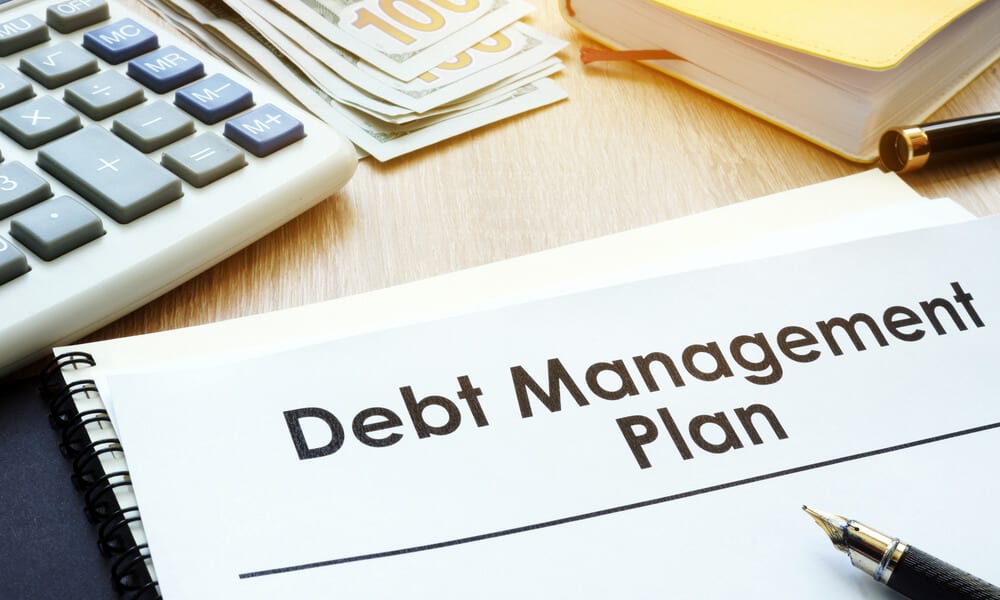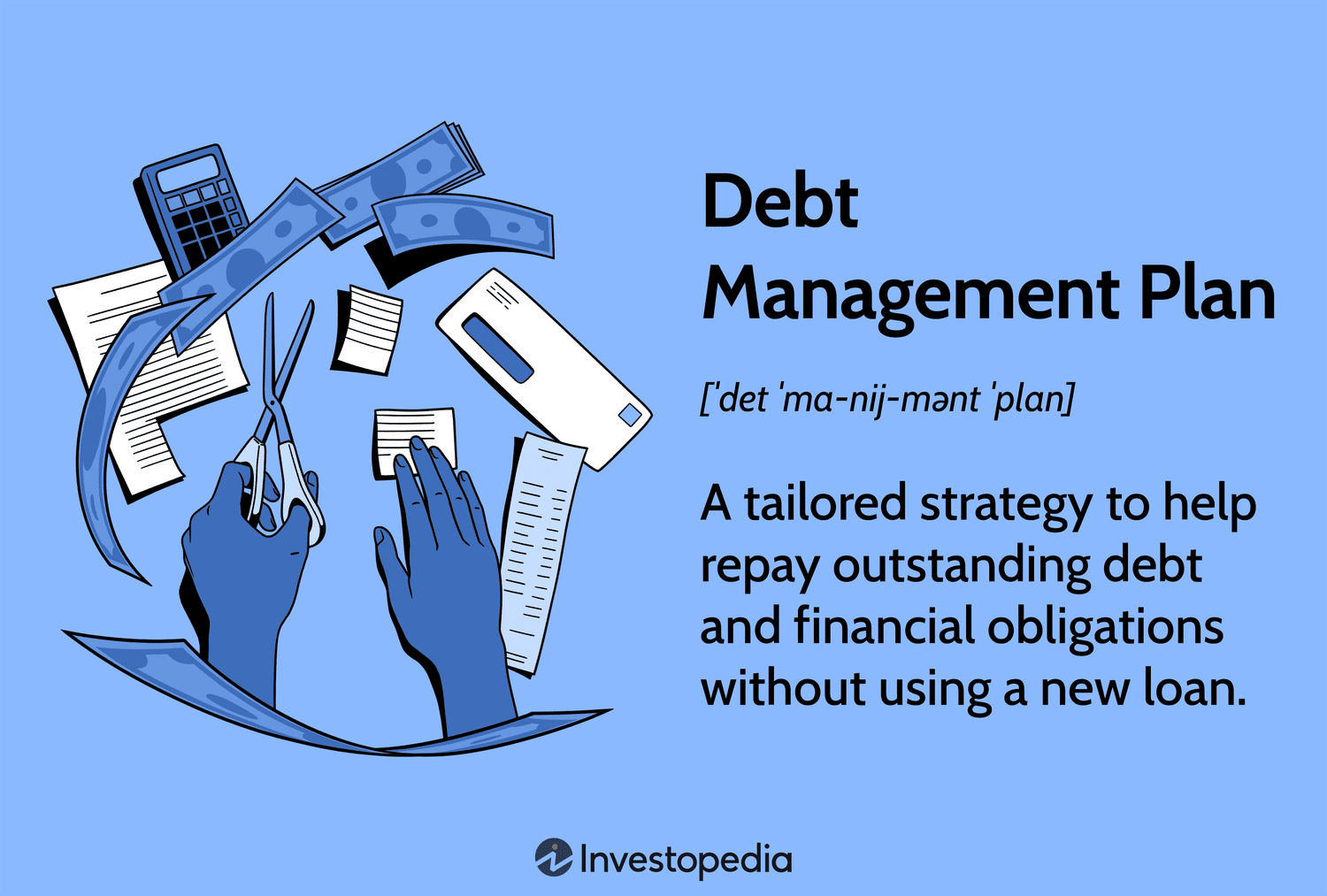Effective Debt Management: Strategies for Financial Freedom
Managing debt can feel overwhelming, but it doesn’t have to be. By understanding the different types of debt and implementing effective management strategies, you can regain control of your finances and pave the way to financial freedom. This article will guide you through the essentials of debt management, including how to assess your situation, develop practical strategies, and maintain a healthy financial future.
:max_bytes(150000):strip_icc()/debt-management-plans-8426688-final-1e629ab12b434dae84166092762fd8d9.png)
Understanding Debt: Types and Impacts
Before diving into debt management strategies, it’s crucial to understand the various types of debt and their potential impacts.
1. Types of Debt
a. Secured vs. Unsecured Debt
- Secured Debt: This type of debt is backed by collateral. If you fail to repay, the lender can seize the asset. Common examples include mortgages and auto loans.
-
Unsecured Debt: This debt is not tied to any specific asset. If you default, lenders have limited options for recovery. Examples include credit card debt and medical bills.
b. Revolving vs. Installment Debt
-
Revolving Debt: This allows you to borrow up to a certain limit and repay it over time, like credit cards. You can borrow again as you pay down the balance.
-
Installment Debt: This is a fixed loan amount that you repay in installments over time, such as a personal loan or student loan.
2. The Psychological Impact of Debt
Debt can take a significant toll on your mental health. Feelings of anxiety, stress, and helplessness can arise from financial burdens. Acknowledging these feelings is the first step towards effective management. Seeking support from financial advisors or mental health professionals can also be beneficial.
Assessing Your Debt Situation
Understanding your current debt situation is the foundation of effective debt management.
1. Creating a Debt Inventory
a. Listing All Debts
Start by listing every debt you owe, including the creditor, total amount owed, monthly payment, and interest rate. This inventory will help you visualize your financial obligations and prioritize repayment.
b. Calculating Total Debt
Once you have a comprehensive list, calculate your total debt. This figure will give you a clear picture of your financial situation and help you set realistic goals for repayment.
2. Analyzing Your Monthly Budget
Review your monthly budget to determine how much you can allocate towards debt repayment. If you don’t have a budget, now is the time to create one. Tracking your income and expenses will help you identify areas where you can cut back and save more for debt repayment.
Effective Debt Management Strategies
Now that you understand your debt situation, let’s explore practical strategies for managing and eliminating debt effectively.
1. Budgeting Techniques
a. The 50/30/20 Rule
One popular budgeting technique is the 50/30/20 rule, which suggests allocating 50% of your income to needs, 30% to wants, and 20% to savings and debt repayment. This framework can help you maintain a balanced approach while making progress on your debt.
b. Zero-Based Budgeting
Zero-based budgeting requires you to allocate every dollar of your income to specific expenses, savings, or debt repayment. By doing so, you ensure that all your money is working towards your financial goals, leaving no room for unnecessary expenditures.
2. Debt Repayment Methods
Choosing the right repayment strategy can make a significant difference in how quickly you can eliminate debt.
a. Snowball Method
The snowball method involves paying off your smallest debts first while making minimum payments on larger debts. As you eliminate smaller debts, you gain momentum and motivation to tackle larger debts.
b. Avalanche Method
Alternatively, the avalanche method focuses on paying off debts with the highest interest rates first. This approach can save you money on interest payments in the long run, helping you become debt-free faster.
3. Debt Consolidation Options
Consolidating your debt can simplify payments and potentially lower your interest rates.
a. Personal Loans
Taking out a personal loan to pay off multiple debts can streamline your payments into one monthly obligation, ideally at a lower interest rate.
b. Balance Transfer Credit Cards
Balance transfer credit cards often offer 0% introductory interest rates for a limited time. Transferring your high-interest debts to a balance transfer card can provide temporary relief, allowing you to pay down your debt without accruing additional interest.
4. Seeking Professional Help
If managing debt feels unmanageable, consider seeking professional help.
a. Credit Counseling
Credit counseling services can help you develop a personalized debt management plan and provide advice on budgeting and financial strategies.
b. Debt Settlement
In some cases, negotiating a debt settlement can lead to reduced balances with creditors. However, this approach can impact your credit score and should be considered carefully.
Maintaining a Healthy Financial Future
Once you’ve managed your debt, it’s essential to focus on maintaining a healthy financial future. Building an emergency fund, improving your credit score, and continuing financial education will all contribute to your long-term financial success.
In the second half of this article, we will explore frequently asked questions about debt management and summarize key points for achieving financial freedom. Stay tuned!
Frequently Asked Questions (FAQs) about Debt Management
1. What is the first step in managing debt?
The first step in managing debt is to assess your current financial situation. This includes creating a debt inventory, listing all your debts, and calculating your total debt. Understanding where you stand financially will help you develop a tailored repayment plan.
2. Should I prioritize paying off high-interest debt first?
Yes, prioritizing high-interest debt is often a smart strategy. By focusing on debts with the highest interest rates, such as credit cards, you can save money in the long run. This approach aligns with the avalanche method of debt repayment, which helps you reduce overall interest payments.
3. How do I know if I need professional help for my debt?
If you’re struggling to keep up with payments, feel overwhelmed, or are unsure of how to proceed, it might be time to seek professional help. Credit counseling services can provide guidance and support tailored to your specific situation.
4. What are the benefits of creating a budget?
Creating a budget helps you manage your expenses, identify areas where you can save, and allocate funds towards debt repayment. By tracking your income and expenses, you can make informed financial decisions and avoid accumulating further debt.
5. How long does it take to become debt-free?
The time it takes to become debt-free varies based on factors such as the amount of debt, income level, and repayment strategy. By consistently following your repayment plan and making adjustments as needed, you can achieve your goal of financial freedom more effectively.
Key Takeaways for Effective Debt Management
To summarize, effective debt management involves understanding your debt, developing a structured repayment plan, and maintaining financial health for the future. Here are some key points to remember:
- Assess Your Debt: Create a debt inventory and analyze your monthly budget.
- Choose a Repayment Strategy: Whether through the snowball or avalanche method, select the strategy that aligns with your financial goals.
- Consider Debt Consolidation: Explore options like personal loans or balance transfer credit cards to simplify payments and potentially lower interest rates.
- Seek Professional Guidance: Don’t hesitate to consult credit counselors or financial advisors if you’re feeling overwhelmed.
- Maintain Financial Discipline: Stick to your budget, avoid unnecessary expenses, and continue educating yourself about personal finance.

Conclusion: Your Path to Financial Freedom
Debt management can be challenging, but with the right strategies and resources, you can take control of your financial future. Remember that every step you take towards managing your debt is a step towards achieving financial freedom.
To learn more about budgeting and debt management, consider checking out these resources:
– Investopedia on Debt Management Plans
– National Foundation for Credit Counseling
By applying these strategies and remaining committed to your financial goals, you’ll be well on your way to overcoming debt and enjoying a healthier financial life.
Take charge of your debt today and embrace the journey toward financial wellness!


